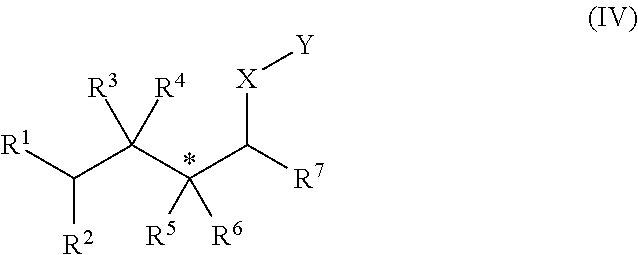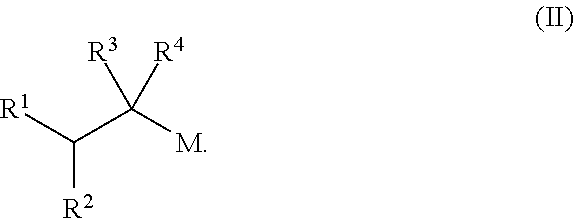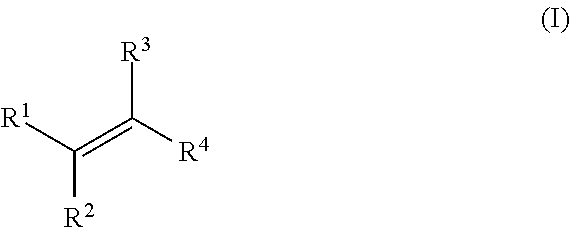Asymmetric synthesis of organic compounds
a synthesis and organic compound technology, applied in the field of organic compound production processes, can solve the problems of a number of significant limitations, far fewer catalytic asymmetric methods for forming carbon-carbon bonds, and fewer synthesis methods
- Summary
- Abstract
- Description
- Claims
- Application Information
AI Technical Summary
Benefits of technology
Problems solved by technology
Method used
Image
Examples
examples
General Procedures
examples 1 to 5
[0176]In Examples 1 to 5, an alkene hydrozirconation reaction was first performed using the Schwartz reagent (Cp2ZrHCl). The hydrozirconated alkene was then reacted with a cyclic enone according to one of the following general procedures.
General Procedure 1
[0177]In a flame dried round-bottomed flask under argon, the copper (I) salt (10 mol %) and ligand (10 mol %) were added. CH2Cl2 (1 mL) was added and the solution was allowed to stir for 1 h. The hydrozirconated alkene was added dropwise to the mixture and stirred for 5 min before the addition of the α,β-unsaturated ketone. The reaction mixture was arbitrarily allowed to stir at room temperature overnight. The reaction was quenched with wet Et2O and 1 M NH4Cl, the aqueous layer was extracted with Et2O×3 then the combined organic layers washed with sat. NaHCO3. The resulting solution was dried with Na2SO4, filtered and the solvent removed in vacuo.
General Procedure 2
[0178]In a flame dried round-bottomed flask under argon, copper (I...
example 1
Synthesis of 3-hexylcyclohexanone
[0183]
[0184]1-hexene (0.06 mL, 0.5 mmol) and CH2Cl2 (0.5 mL) were added to a flame dried 5 mL round-bottomed flask under argon with stirring. Bis(cyclopentadienyl)zirconium chloride hydride (Schwartz reagent, 103 mg, 0.4 mmol) was added and the reaction mixture was allowed to stir at room temperature until the reaction becomes a homogeneous yellow solution. The above-mentioned general procedures were then used to perform the conjugate addition reaction. The product compound was characterised using 1H NMR and 13C NMR. The presence of an enantioexcess was determined by derivatization and comparison of the 13C NMR spectrum to that of the racemic material that had been derivatised in the same way. Specifically, the crude 1,4-conjugate addition reaction mixture was transferred to a vial with CDCl3. Then, 3 Å mol. sieves and (1R,2R)-(+)-1,2-Diphenylethylenediamine ((R,R)-Dpen, ca. 1.5-2 eq) were added. The vial was shaken and allowed to stand for at least ...
PUM
| Property | Measurement | Unit |
|---|---|---|
| cryogenic temperatures | aaaaa | aaaaa |
| enantiomeric excess | aaaaa | aaaaa |
| enantiomeric excess | aaaaa | aaaaa |
Abstract
Description
Claims
Application Information
 Login to View More
Login to View More - R&D
- Intellectual Property
- Life Sciences
- Materials
- Tech Scout
- Unparalleled Data Quality
- Higher Quality Content
- 60% Fewer Hallucinations
Browse by: Latest US Patents, China's latest patents, Technical Efficacy Thesaurus, Application Domain, Technology Topic, Popular Technical Reports.
© 2025 PatSnap. All rights reserved.Legal|Privacy policy|Modern Slavery Act Transparency Statement|Sitemap|About US| Contact US: help@patsnap.com



